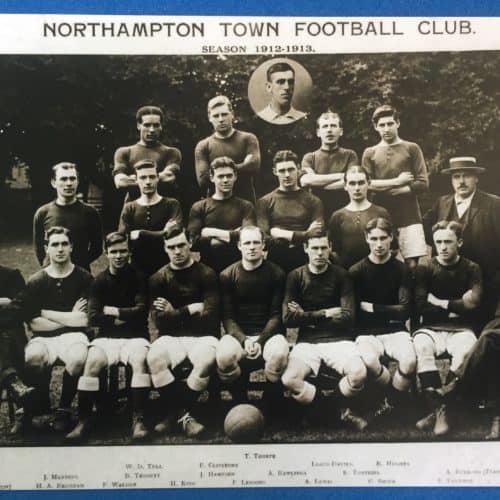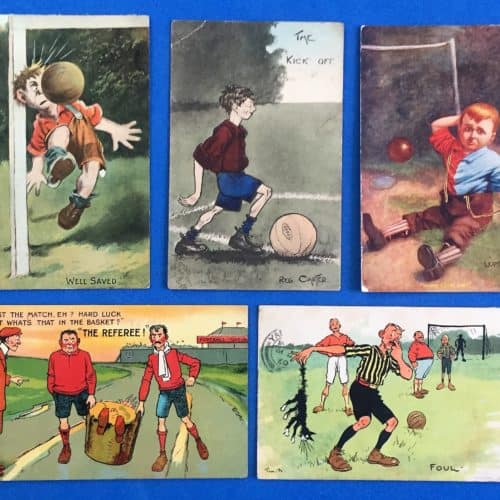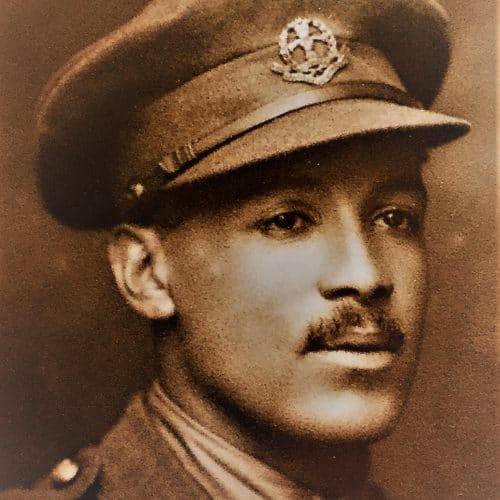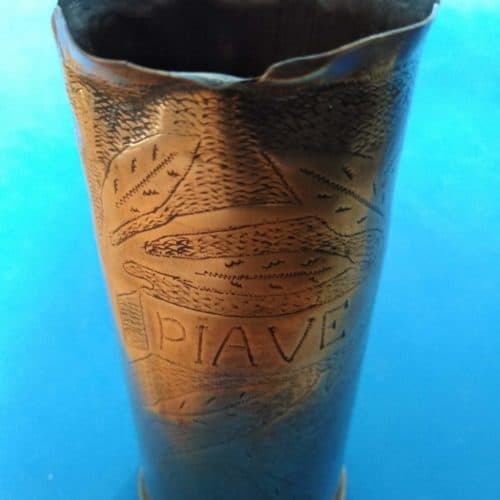WW1 13: Walter Tull
Walter Tull was born and went to school in Folkestone. He became a famous footballer and was one of the first black footballers to play for a top team.
His clubs included Tottenham Hotspur and Northampton Town (pictured here during the 1911-12 season). Walter is far left in the back row.
He played for Tottenham in the First Division (the equivalent of today’s Premiership). Shortly after his debut in 1909, a reporter for the Football Star magazine commented:
‘He is Hotspur’s most brainy forward… so clean in mind and method as to be a model for all white men who play football.’
These cartoon postcards were produced between 1906 and 1916. They show the type of kit that footballers were wearing when Walter Tull was playing.
The heavy leather football was quite different to the ones we use today. If you headed it wrong, it could knock you out!
It’s a cap badge from the Middlesex Regiment.
On the outbreak of war in 1914, Walter Tull enlisted in the British Army. Over the next few years he served in both Football Battalions of the Middlesex Regiment.
Lots of footballers joined football battalions, so friends and team-mates from the same team could fight alongside each other.
Walter Tull was a brave soldier and a great leader of men.
He witnessed the horrors of the the Battle of the Somme in 1916. Of the 400 men of Walter’s Middlesex Regiment who went to fight in the battle, only 79 returned.
In 1917 he became the first black soldier to serve as an officer in a regular British Army regiment.
As Second Lieutenant Walter Tull fought on the Italian Front from November 1917 to March 1918. He was praised for his gallantry and coolness in leading 26 men in a night raid across the fast-flowing rapids of the Piave River, into enemy territory, and returning them unharmed. He was recommended for a Military Cross, but never received it.
It’s a brass shell case from the Italian Front on the Piave River where Walter Tull fought.
It’s been made into a piece of trench art, engraved with the word PIAVE and the leaves and branches of a tree.
Shells were the explosive charges fired from the big guns (called heavy artillery). They caused huge devastation… blowing up soldiers, trenches and equipment, creating huge craters and sending shards of deadly shrapnel flying in all directions.
Soldiers had lots of spare time in the trenches, and those with artistic skills sometimes created pieces of trench art. They made them as souvenirs of the war using whatever materials they had to hand. Empty shell cases were a favourite item and were made into all manner of useful objects from flower vases and candle holders to umbrella stands!
Walter Tull returned to fight in Northern France, where sadly he was killed in action on 8 March 1918, during the first Battle of Bapaume. His body was never recovered.
His name appears on the Folkestone War Memorial, on the war memorial at North Board School (now Mundella Primary School) and on his parents’ grave at Cheriton Road Cemetery.
He is remembered today as a footballer, soldier and hero - a talented, courageous and inspirational man, who through his conduct and actions, in peace and war, helped break down the barriers of racial prejudice.






